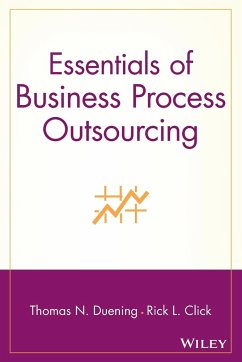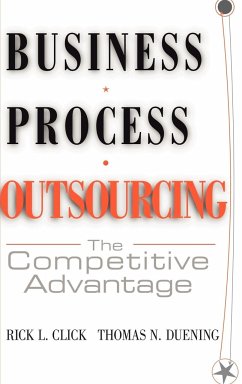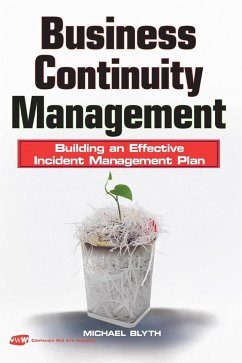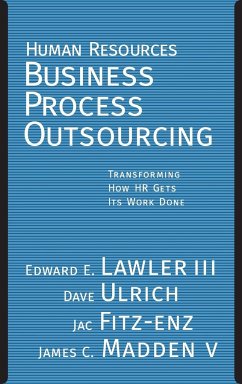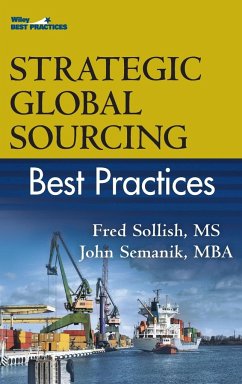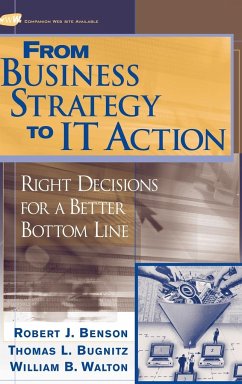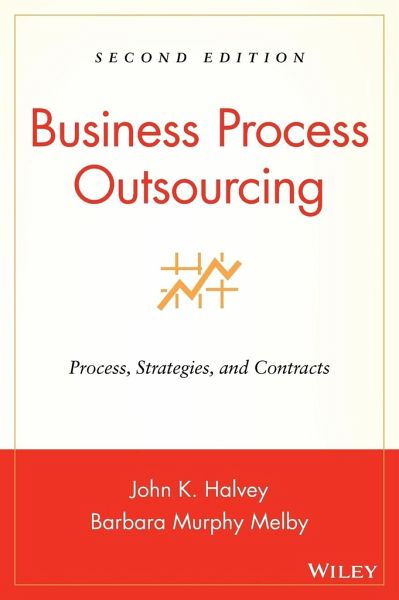
Business Process Outsourcing 2E w/ URL
Versandkostenfrei!
Versandfertig in über 4 Wochen
Weitere Ausgaben:

PAYBACK Punkte
95 °P sammeln!





Many corporations are currently restructuring their business processes in order to become more competitive and cost effective. Once the decision has been made to outsource, a corporation must structure the deal. This book will show them how to request proposals and negotiate and close the agreement creating the outsourcing strategy.
John K. Halvey is a partner in the New York office of the international law firm of Milbank, Tweed, Hadley, & McCloy, LLP and the founder of the Strategic Sourcing and Technology Group. He practices in all areas of technology and sourcing law, with particular emphasis on information technology and business process outsourcing and private equity transactions involving technology or sourcing companies. Mr. Halvey has represented companies in many of the largest technology, telecommunications, and business processing outsourcing transactions, including Deutsche Bank, JP Morgan, BellSouth, Panasonic, Citigroup, DuPont, AT&T, Alcatel, Xerox, Boeing, Bombardier, General Atlantic and the Commonwealth Bank of Australia. His work in these areas has been the subject of articles in Forbes, Information Week, Computer World, CIO Magazine, The Daily Deal, and Venture Capital Journal. Mr. Halvey has for many years been ranked by Chambers and Partners as one of the world's leading information technology and outsourcing lawyers and was the only lawyer in the United States to be ranked a "Star Performer" in the outsourcing industry in both 2005 and 2006. In 2006 Mr. Halvey received the Chambers Shield of Excellence as the Outsourcing Attorney of the Year and as the HR Outsourcing Attorney of the Year by the HROA. In 1995 Crain's named Mr. Halvey on its list of the 40 most successful people under 40 in New York City. He is the coauthor of Information Technology Outsourcing Transactions: Process, Strategies, and Contracts (John Wiley & Sons, 2005). Barbara M. Melby is a partner in the Global Outsourcing Group at Morgan, Lewis & Bockius, LLP. Ms. Melby's practice focuses primarily on outsourcing transactions, including information technology and business process outsourcing, as well as other technology-related transactions, including development agreements, system implementation agreements, licensing and hosting agreements, technology services, joint ventures, and strategic alliances. One of the leading outsourcing attorneys in the United States, Ms. Melby is the coauthor of Information Technology Outsourcing: Process, Strategies, and Contracts (John Wiley & Sons, 2005). She was recently recognized by Chambers USA as one of the nation's leading lawyers for Business Process Outsourcing. In addition to her two books, she has written numerous articles in and has been widely quoted in a wide variety of publications, including CIO Magazine, IT World, The Metropolitan Corporate Counsel, and The Pennsylvania Lawyer. Ms. Melby is also a frequent speaker on outsourcing and technology transactions at various business, legal, and professional conferences.
Produktdetails
- Verlag: Wiley & Sons
- 2. Aufl.
- Seitenzahl: 600
- Erscheinungstermin: 1. April 2007
- Englisch
- Abmessung: 260mm x 183mm x 37mm
- Gewicht: 1195g
- ISBN-13: 9780470044834
- ISBN-10: 0470044837
- Artikelnr.: 22546898
Herstellerkennzeichnung
Libri GmbH
Europaallee 1
36244 Bad Hersfeld
gpsr@libri.de
"This book provides a welcome and detailed account of what BPOs are, how to measure outsourcing performance..." (Government Opportunities, July 2007)
Für dieses Produkt wurde noch keine Bewertung abgegeben. Wir würden uns sehr freuen, wenn du die erste Bewertung schreibst!
Eine Bewertung schreiben
Eine Bewertung schreiben
Andere Kunden interessierten sich für


